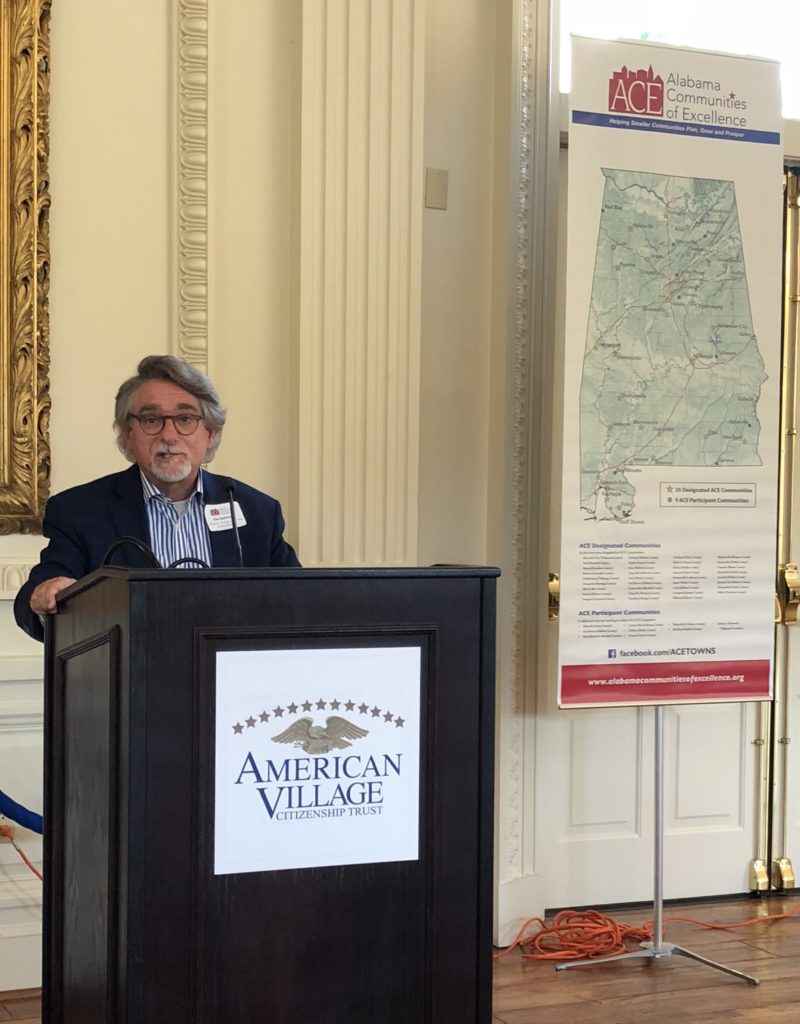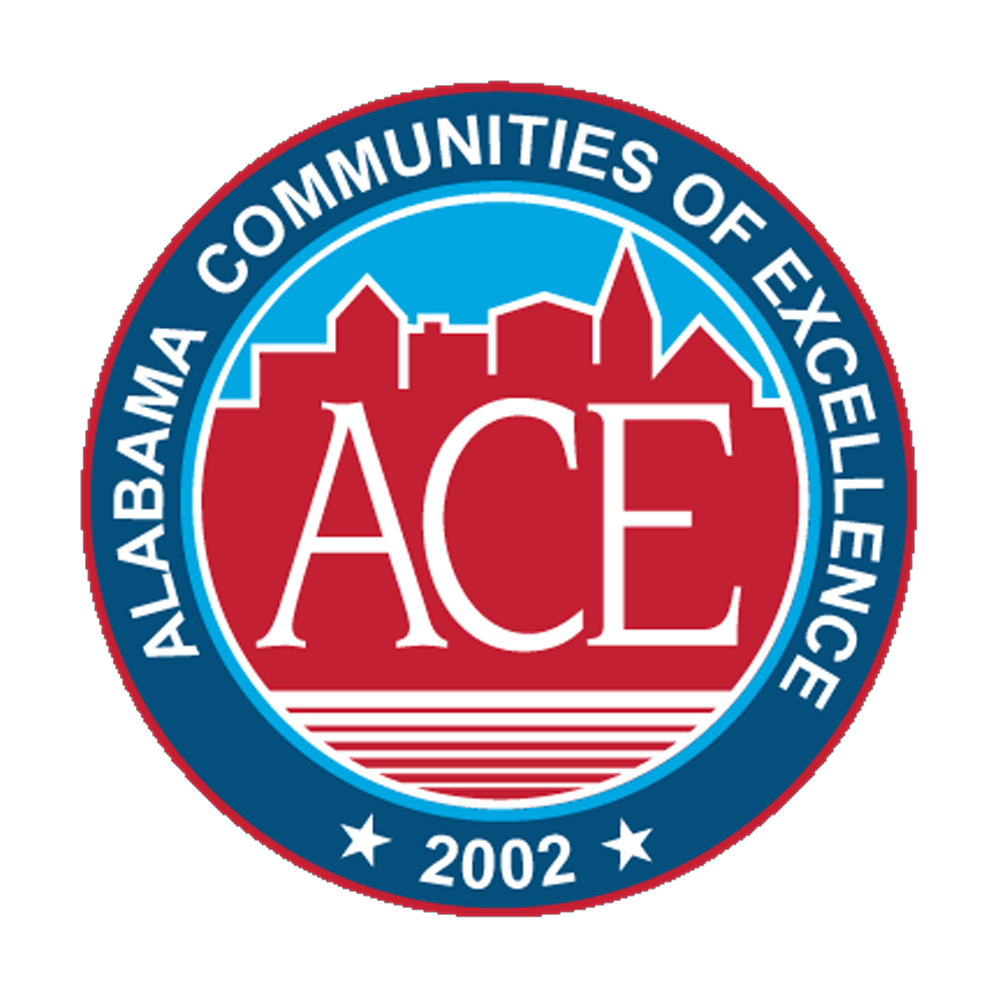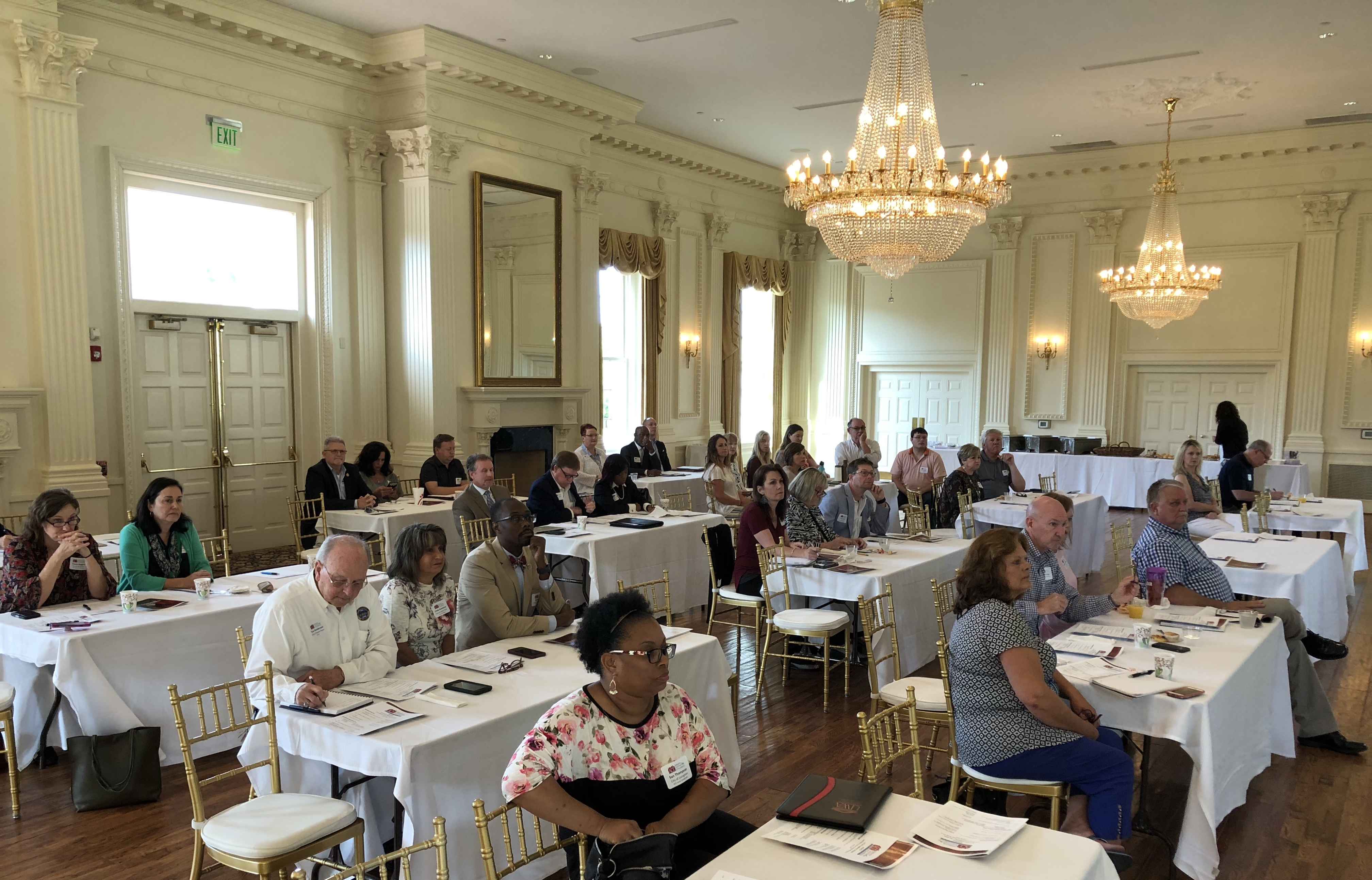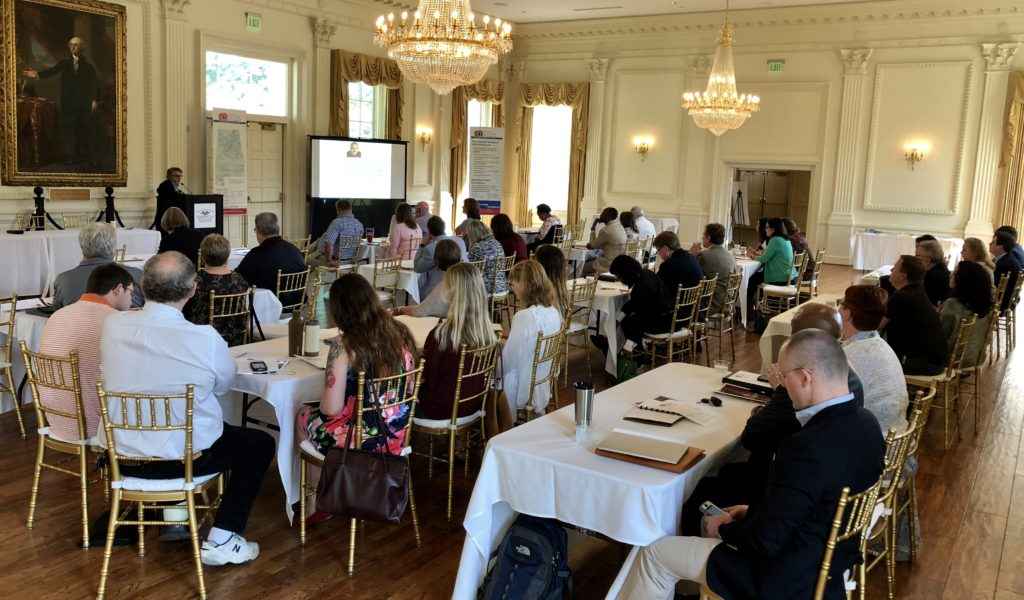Recent ACE Reunion focused on the need for collaboration to produce more skilled labor
By Cary Estes
The American Village in Montevallo was an appropriate setting for July’s fourth annual Alabama Communities of Excellence (ACE) Reunion. Community leaders, government officials and state educators gathered to discuss the connection between a skilled workforce and economic development, and ways to improve both in Alabama.
The theme that developed throughout the day was the importance of having strong communication and cooperation within the community. From the companies looking for workers to the schools that will train them to the parents and students themselves. They all need to bond together, sort of like, well, a village.
“You need to have all the players in the community – government, business, education – on the same page,” Dr. Joe Sumners, Executive Director of Auburn University’s Government & Economic Development Institute, told the gathering. “We need more collaboration, people working together to foster a cross relationship between education and employers.”

Or as Roger Fortner with the Alabama Department of Commerce said later, “It truly does take a village to get this work done, including the work of ACE community leaders.
“If you’re working to become an ACE town, it’s important that you get a bunch of good partners and you all pull in the same direction. Nobody became an ACE town by themselves. It’s the same with workforce development. We’re not going to build a workforce by ourselves. It’s all about strength in numbers.”
Sumners, who has assisted Alabama communities with strategic planning for 30 years, said the top concern he hears these days by far is the need for qualified workers. He said nearly 85 percent of jobs in the state require some form of higher education or training, yet more than 20 percent of the adult population in many rural counties don’t have even a high school degree.
“It used to be that a person with a high school degree or less could still get a job making a pretty good living. That’s not the case anymore,” Sumners said. “You need some level of higher training or skill to get a decent job.
“Things are changing very rapidly. The auto plant is no longer about workers turning the wrenches. It’s about folks attending to robots, which is a different kind of job. And companies are not going to put industry in a place that does not have enough skilled workers.”
In other words, if you can’t build it, they won’t come. All of which makes workforce development a key competent of any economic-development plan.
“Employees in every industry and job sector are asking the same thing: ‘How are we going to find, train and retain the best workers?’ That question is going to be increasingly critical as we go forward,” Sumners said. “In economic development, no issue is more important.”
That is particularly true throughout many rural areas of Alabama, where workforce numbers are down in general because of population loss. Some areas also have been hit hard by the national opioid epidemic, further shrinking the available labor pool.
“I talk to businesses that are eager to hire entry-level workers and are willing to train them, but they say they can’t get enough people who can pass a drug test,” said Dr. Mark Wilson of the Jefferson County Department of Health. “There needs to be a pathway for people who are addicted to get into treatment and recovery, and then be placed into jobs.”
Because there are so many challenges facing smaller communities when it comes to fostering skilled labor, Fortner said a “rural workforce playbook” is being created for the AlabamaWorks.com website. He said the page will use a real-world case to detail how a successful workforce program can be established.
“Basically it provides you an example that you can copy,” Fortner said. “We don’t need to reinvent the wheel to do this. We just need to share the good ideas.”
Sharing ideas was the goal of the Workforce Development panel discussion, which involved representatives from three of the state’s seven Regional Workforce Councils. They stressed the importance of creating a connection between businesses, schools and students / future workers.
“A lot of what we do is work with our businesses and industry to identify their needs,” said Stephanie McCulloch, Assistant Director for North Alabama Works. “It’s really important that we’re hearing their voices and responding to them, so we know what kind of education and training programs need to be introduced.”
Among the programs mentioned during the discussion were:
- The Career Coach Initiative: Community colleges provide advisors to help high-school students identify a career path they are interested in pursuing, and then connect the students with business and industry contacts in that field.
“We added to this with an event where we brought in the career coaches and introduced them to local businesses,” McCulloch said. “The career coaches need to be as knowledgeable as possible about the industry needs in order to be able to talk to students about the opportunities that are out there.”
- Worlds of Work (WOW): These events, which take place throughout the state, are aimed specifically at eighth-graders. The goal is to introduce students to a variety of technical and high-wage job options, so they can start developing a career plan before they enter high school.
“We had more than 6,000 students from all over the region come to Shelton State Community College (for this year’s event),” said Audrey Vaughn, Rural Outreach Coordinator for West Alabama Works. “The businesses set up equipment and structures to make it look like the students were going into that work environment. They were able to see what a nurse does, a construction worker, a welder. Shelton State was turned into a mini city.”
A second event, WOW 2.0, enabled high school juniors and seniors to have interviews with actual companies looking to hire new workers. Vaughn said many of the students received apprenticeship offers or were able to enter ready-to-work programs.
- Power Up: This Birmingham-based, non-profit organization is attempting to increase the number of women working in construction by presenting the industry to girls – and, perhaps most importantly, to their mothers – as a legitimate career path for young women to pursue.
“It’s important to educate the parents about the huge growth opportunities in construction,” said Kristen O’Keefe, Industry Cluster Coordinator for Central Six Alabama Works. “We bring in really talented women from the industry for panel discussions. The girls get to wear hard hats and safety glasses. It’s great to see that when the girls are all together, it seems like they are a lot less intimidated to do these things that they’ve been told only boys are allowed to do.”
These programs and initiatives are among the many ways that Alabama is working to keep pace with all the changes taking place in workforce development.
“We’re a long way from where we need to be, but we can all start to get better right now,” Sumners said. “We have to raise the bar and get better in everything we do. Because it’s a competition, and we have to start running.”
_______________
For additional information about the ACE Reunion event, including copies of the agenda and presentation materials, please check out this link: https://www.alabamacommunitiesofexcellence.org/ace-reunion-2018/


